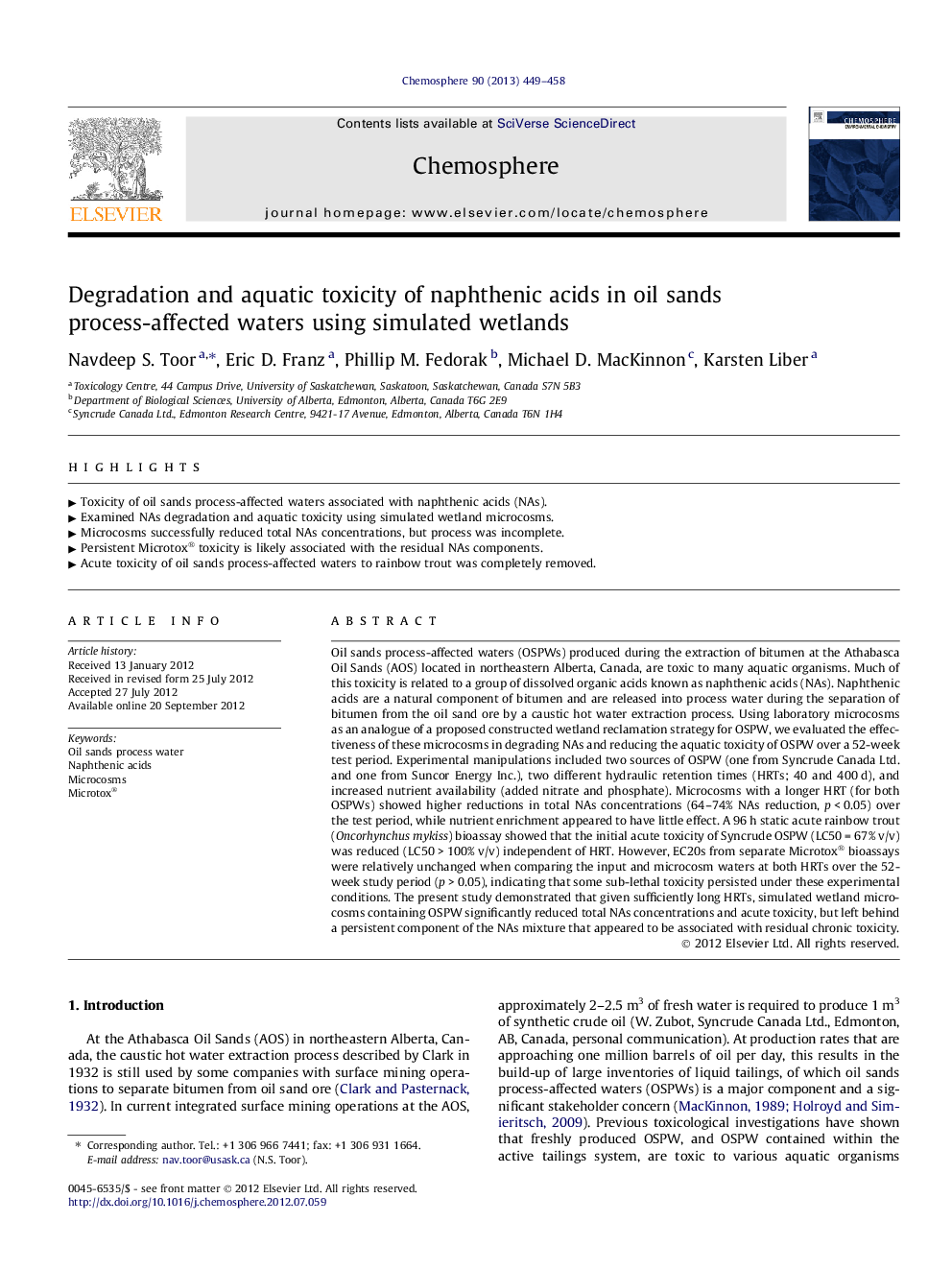| کد مقاله | کد نشریه | سال انتشار | مقاله انگلیسی | نسخه تمام متن |
|---|---|---|---|---|
| 6310845 | 1307494 | 2013 | 10 صفحه PDF | دانلود رایگان |
Oil sands process-affected waters (OSPWs) produced during the extraction of bitumen at the Athabasca Oil Sands (AOS) located in northeastern Alberta, Canada, are toxic to many aquatic organisms. Much of this toxicity is related to a group of dissolved organic acids known as naphthenic acids (NAs). Naphthenic acids are a natural component of bitumen and are released into process water during the separation of bitumen from the oil sand ore by a caustic hot water extraction process. Using laboratory microcosms as an analogue of a proposed constructed wetland reclamation strategy for OSPW, we evaluated the effectiveness of these microcosms in degrading NAs and reducing the aquatic toxicity of OSPW over a 52-week test period. Experimental manipulations included two sources of OSPW (one from Syncrude Canada Ltd. and one from Suncor Energy Inc.), two different hydraulic retention times (HRTs; 40 and 400 d), and increased nutrient availability (added nitrate and phosphate). Microcosms with a longer HRT (for both OSPWs) showed higher reductions in total NAs concentrations (64-74% NAs reduction, p < 0.05) over the test period, while nutrient enrichment appeared to have little effect. A 96 h static acute rainbow trout (Oncorhynchus mykiss) bioassay showed that the initial acute toxicity of Syncrude OSPW (LC50 = 67% v/v) was reduced (LC50 > 100% v/v) independent of HRT. However, EC20s from separate Microtox® bioassays were relatively unchanged when comparing the input and microcosm waters at both HRTs over the 52-week study period (p > 0.05), indicating that some sub-lethal toxicity persisted under these experimental conditions. The present study demonstrated that given sufficiently long HRTs, simulated wetland microcosms containing OSPW significantly reduced total NAs concentrations and acute toxicity, but left behind a persistent component of the NAs mixture that appeared to be associated with residual chronic toxicity.
⺠Toxicity of oil sands process-affected waters associated with naphthenic acids (NAs). ⺠Examined NAs degradation and aquatic toxicity using simulated wetland microcosms. ⺠Microcosms successfully reduced total NAs concentrations, but process was incomplete. ⺠Persistent Microtox® toxicity is likely associated with the residual NAs components. ⺠Acute toxicity of oil sands process-affected waters to rainbow trout was completely removed.
Journal: Chemosphere - Volume 90, Issue 2, January 2013, Pages 449-458
